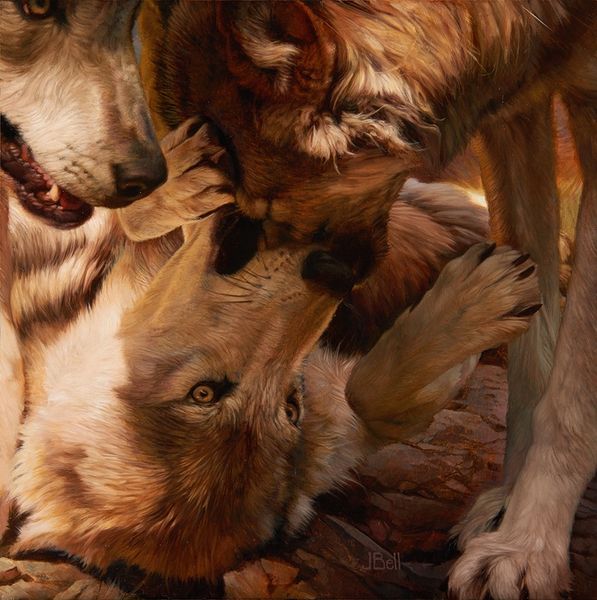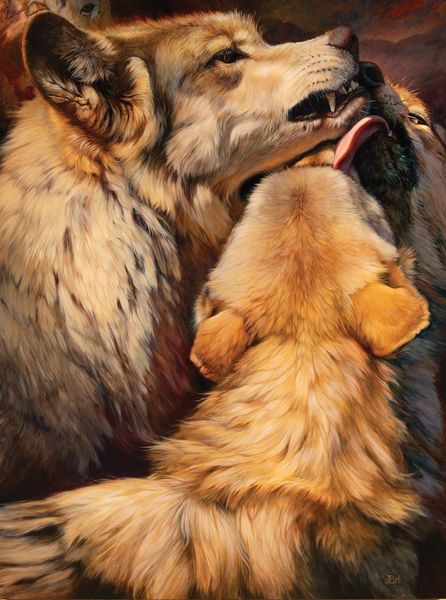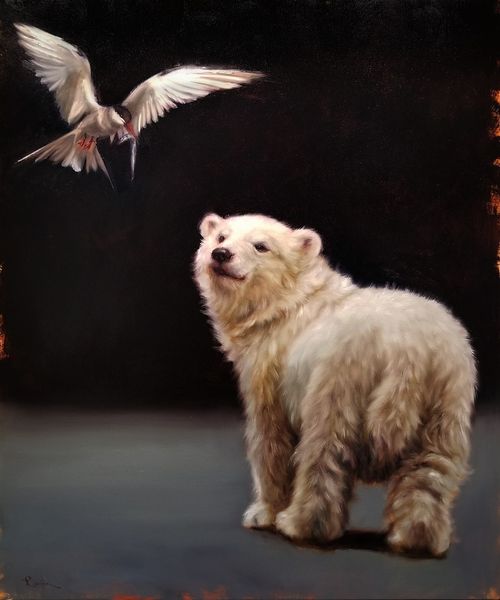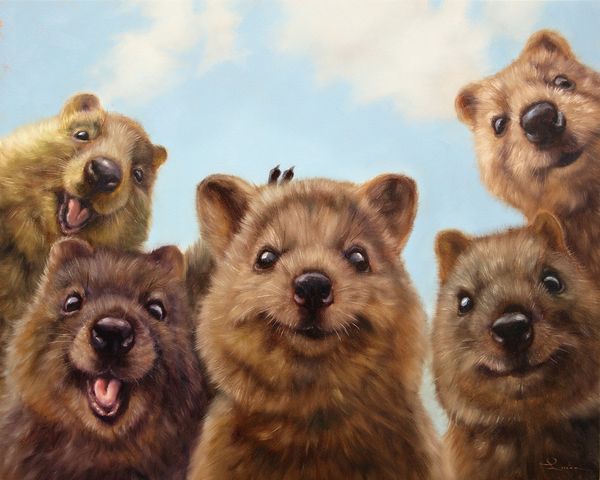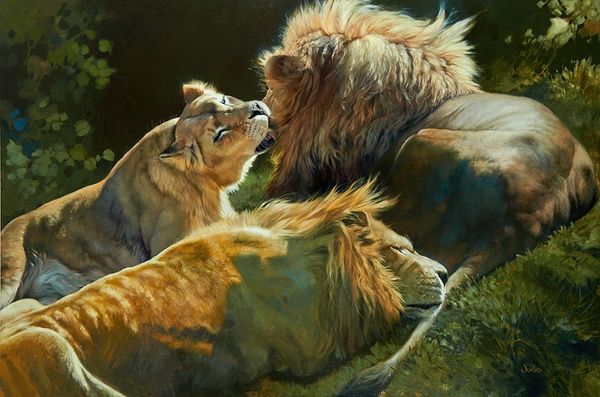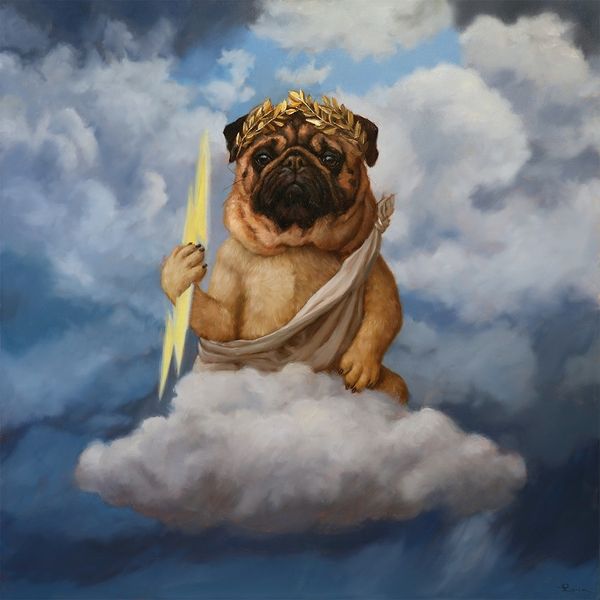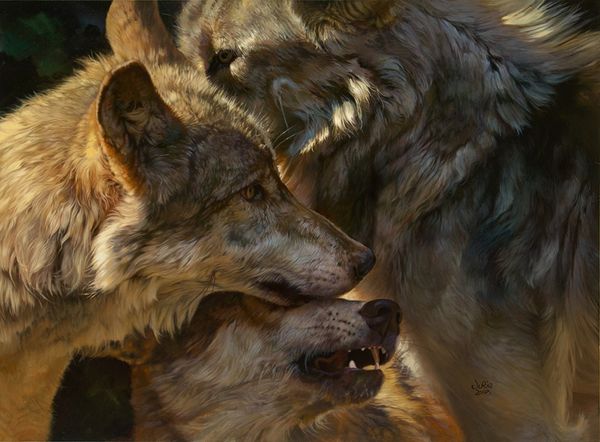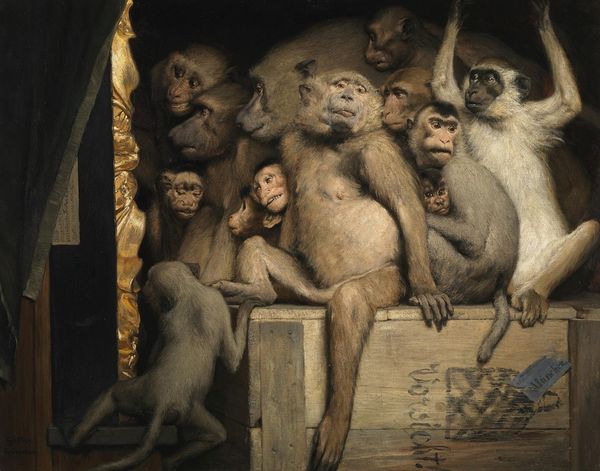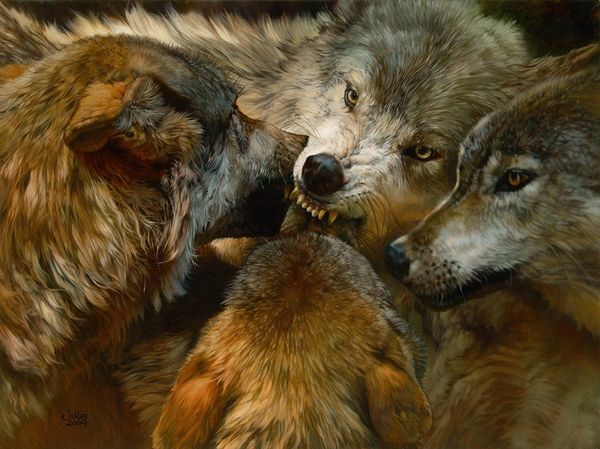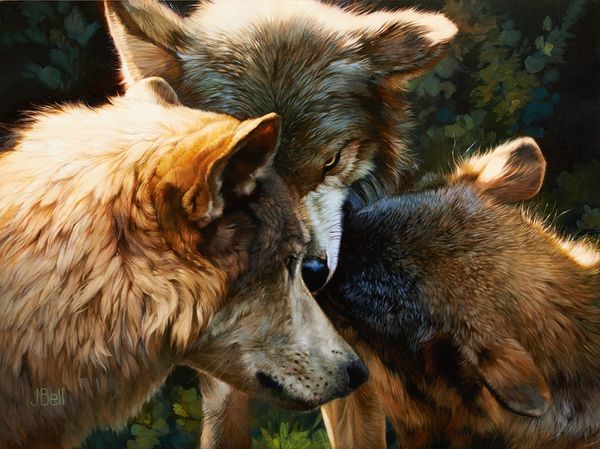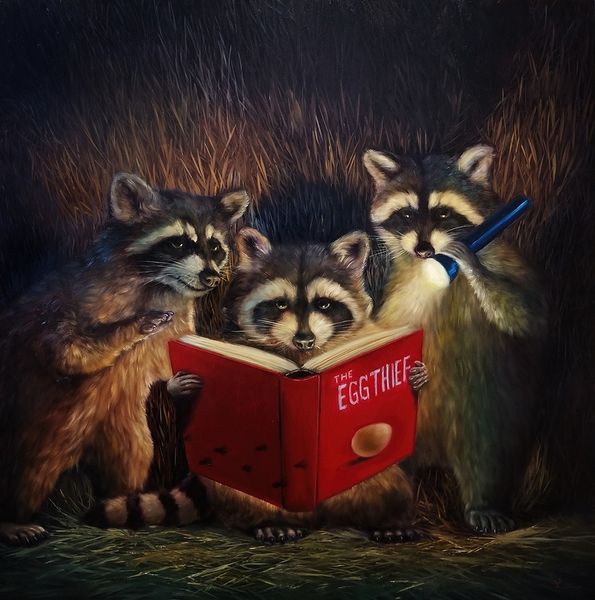
oil-paint
#
portrait
#
gouache
#
allegory
#
oil-paint
#
oil painting
#
animal portrait
#
surrealism
#
realism
Copyright: Modern Artists: Artvee
Curator: At first glance, the title, Agnus, offers a key to understanding this disquieting piece: Agnus Dei, the Lamb of God. Editor: Disquieting is right. It's a striking image, all teeth and wool. A single lamb, illuminated by what looks like a golden halo, is entirely surrounded by snarling wolves. It feels claustrophobic and violent. Curator: Yes, and knowing the title recontextualizes the painting. While the artwork’s date is unknown, and the artist, Konstantin Korobov, might be unfamiliar, the symbolic language is centuries old. This is about sacrifice, vulnerability, and perhaps the corruptibility of innocence in a dangerous world. Editor: The halo, of course, is the immediate signifier of holiness. But juxtapose that with the raw aggression of the wolves. Look at their eyes! Each one gleams with predatory intent. It is powerful Christian symbolism combined with raw realism in rendering of animals. What is interesting to me, beyond Christian art, is how many cultural mythologies use animal representations for human conditions. Curator: Indeed. It could be said the wolves represent secular forces always threatening the sacred, or worldly corruption eager to destroy the divine… The brilliance here is in making such an abstract conflict viscerally real. Note how Korobov uses oil paint to achieve hyper-realistic textures. You can practically feel the coarse wool of the lamb and the damp snouts of the wolves. Editor: That tactility really enhances the horror. I can almost feel the tension, the barely restrained violence. But even beyond the obvious religious interpretation, it strikes a more universal chord: innocence besieged, the individual against the mob. I see this painting as a representation of those existential themes. Curator: Agreed. Its strength is its multifaceted appeal. It serves both as a contemporary reflection on religious iconography, but also touches on eternal questions regarding humanity. It is interesting how this artwork makes this argument combining Realism, Surrealism, and the portrait genres. Editor: Ultimately, "Agnus" lingers in the mind because it leaves space for those interpretations, forcing us to confront uncomfortable truths about power, faith, and our own potential for both victimhood and aggression. Curator: Precisely, leaving the viewer to wrestle with its implications long after they’ve turned away. It’s a testament to the potency of symbolic imagery when handled with such skillful intensity.
Comments
No comments
Be the first to comment and join the conversation on the ultimate creative platform.
